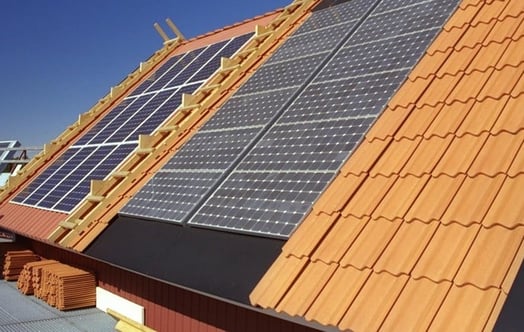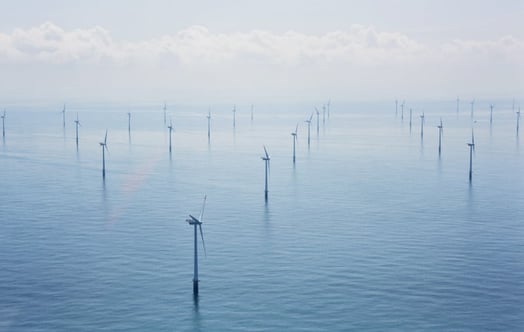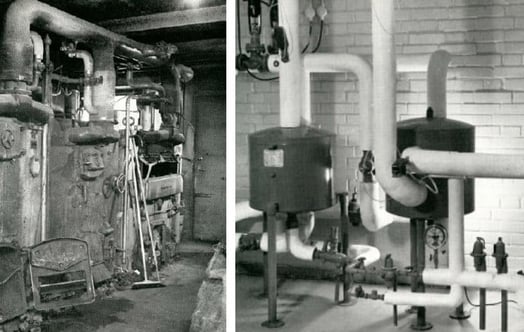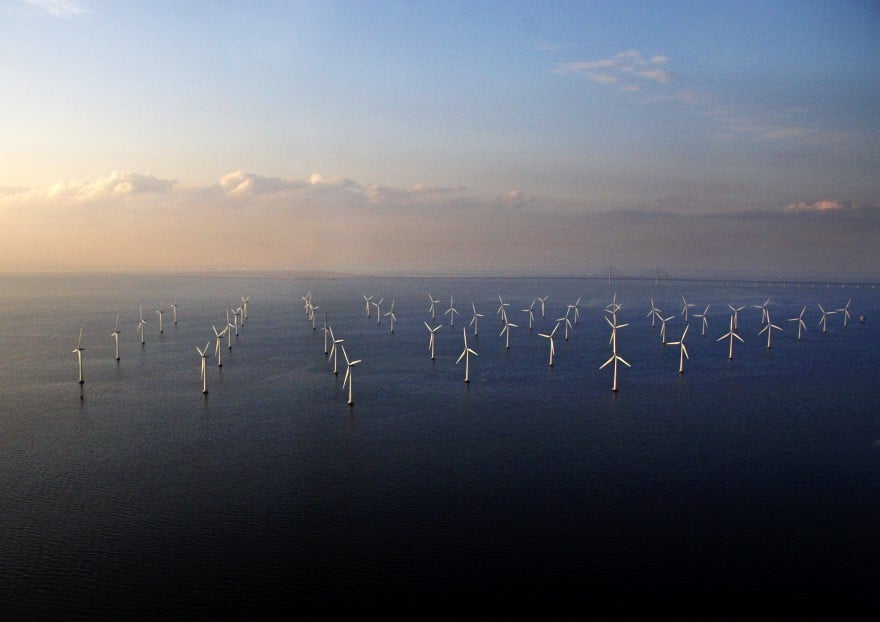
The evolution of wind power
It took many years before wind power went from being just a promising resource to being an established energy source. Sweden's first pilot project literally ended with a bang. However, the time was right for this form of energy – today, Vattenfall is one of Europe's leading producers of wind energy.
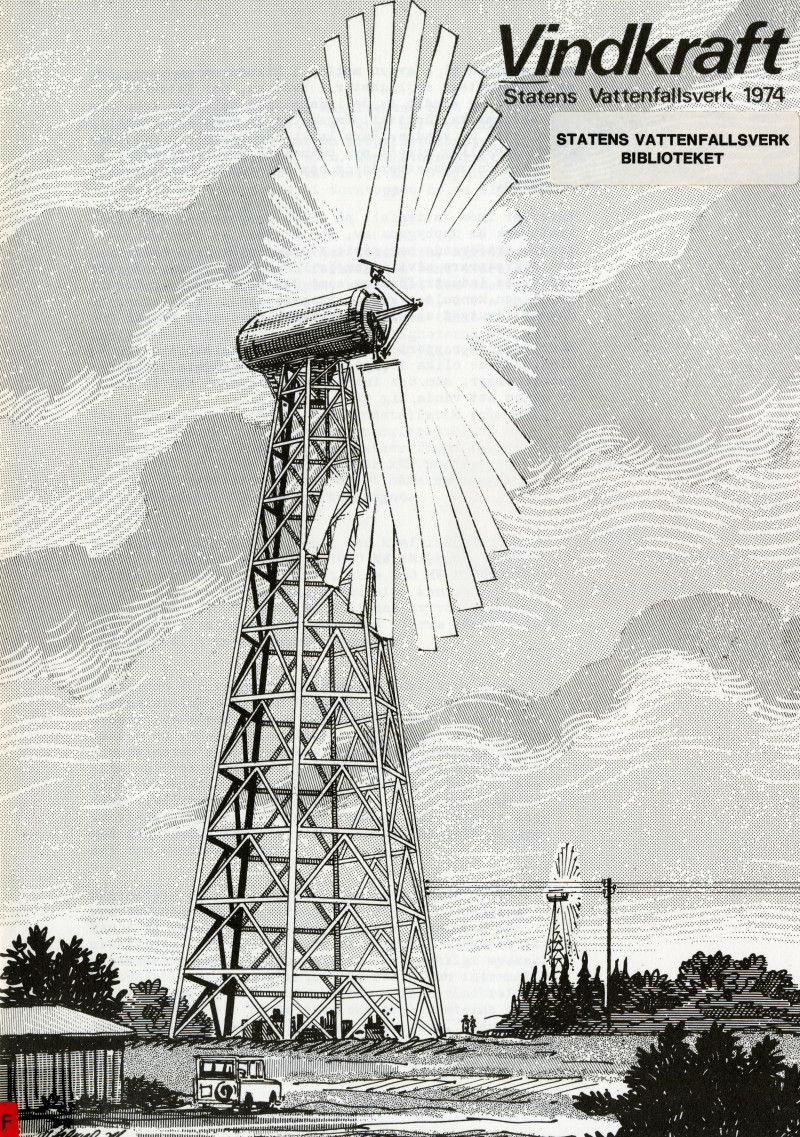
The cover of the Vattenfall's wind power report. Year: 1974 | Place: - | Creator: Okänd | ID: VF001014
It was following the oil crisis in 1973 that Vattenfall made an initial assessment of wind power as a future energy source. At that time it was clear that neither the technical nor financial conditions for large-scale production of electrical power from wind turbines would be in place for some time
But the state, the owner of Vattenfall, wanted to continue to explore all possibilities available to reduce the country's dependence on oil. In 1974, therefore, the state wind power programme was launched. Vattenfall was given the task of investigating suitable locations for wind turbines, which resulted in the “localisation of wind power” report in 1977.
The investigators found that 'many years of extensive investigation and development work' remained before it would be possible to know whether wind power could become 'an interesting source of energy'. They were right. Vattenfall, the state and other players would collaborate on the development of wind power for many years to come. But commercialisation of the technology was far in the future.
However, one initial concrete result of the state wind power programme saw the light of day in April 1977. This was when the very first trial facility was inaugurated – the Kalkugnen wind power plant on the northern Uppland coast near Älvkarleby. Vattenfall had been commissioned by the state to manage the practical implementation of the project. The aim of Kalkugnen was to gather information on how this type of facility worked and should be designed. The story of Kalkugnen was short-lived. After three years of trial operation, parts of the facility collapsed following an accident involving the replacement of rotor blades.
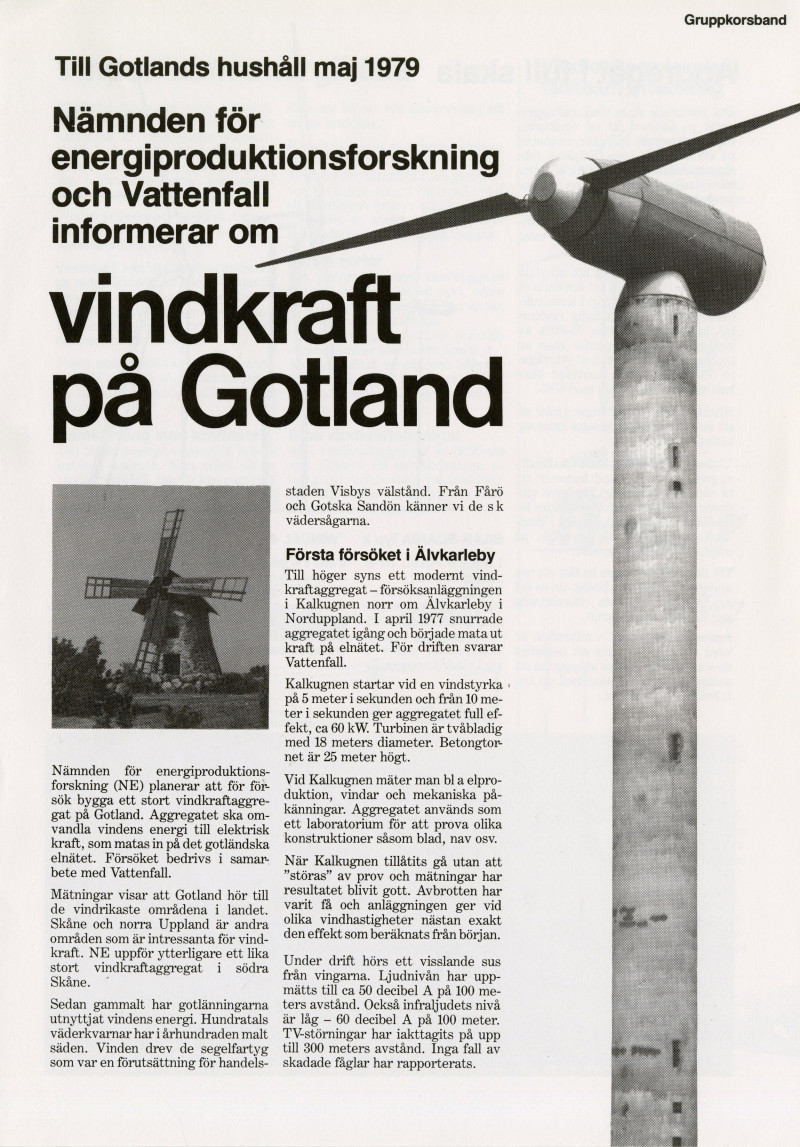
The cover of a brochure from Vattenfall to households on Gotland. Year: 1979 | Place: - | Creator: Okänd | ID: VF001015
But shame on those who gave up. Development work for larger facilities continued. Vattenfall was again asked to participate when the next development stage commenced. The location was Näsudden on Gotland, and construction of a new facility commenced there in 1979. When this facility was commissioned in 1983, it was one of the largest in the world: the tower was 77 metres tall and the rotor had a diameter of 75 metres. The facility had a rated output of 2 MW. In addition, a 140-metre-tall mast for wind measurements was constructed that, along with a highly advanced measurement system in the turbine, provided increased knowledge of winds and forces. A parallel project was conducted by Sydkraft, another power company in Sweden, at Maglarp in Skåne.
Video player requires marketing cookies.
To view this content please click here to allow marketing cookies.
After 15 years of development: Vattenfall's views on wind power in 1988 (in Swedish)
The 1980s – a lost decade
Following the referendum on nuclear power in 1980, and the subsequent parliamentary decision on the phase-out of nuclear power, interest in wind power dropped off in Sweden. Further studies and development stages that would have provided knowledge and skills were not carried out. At least not immediately. It may seem paradoxical, but in order to rapidly replace nuclear power, the state and the power industry instead focused attention on solutions within existing technology. It was conventional thermal power using fuels such as coal, peat, natural gas and bioenergy that were the focus.
A new focus on wind power
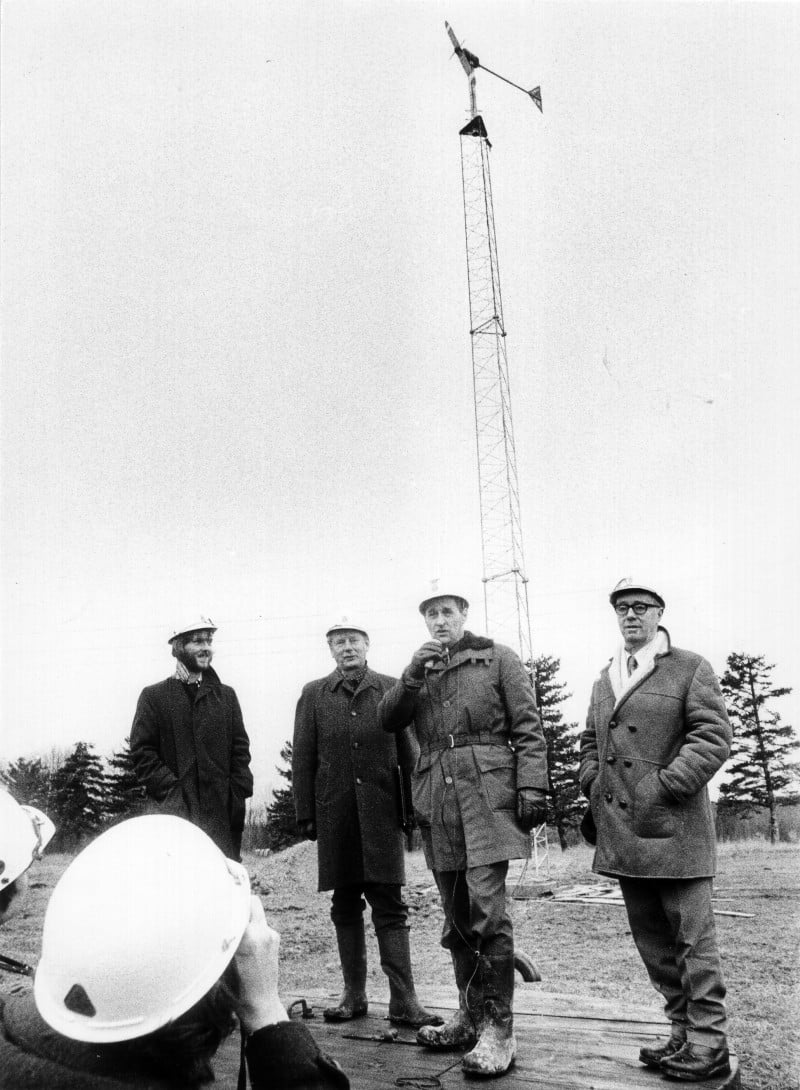
Early wind power. Mellerud 1975. Cooperation Chalmers/Vattenfall. From the left: Per-Johan Svenningson, Erik Nilsson, Ingvar Larsson and Svante Zweigbergh. Year: 1975 | Place: Mellerud | Creator: Brudslöjan | ID: VF000214
But in other countries, such as Denmark, the USA and Germany, the development of wind power was moving ahead. Higher energy prices than in Sweden and market incentives were important driving forces. In the early 1990s, the issue of climate change began to be increasingly relevant. Fossil and non-renewable fuels like coal and oil were increasingly questioned. Interest in the development of wind power was reawakened in Sweden. One sign of this was the government's introduction of investment support for wind turbines in 1991. Vattenfall now resumed activities on Gotland, and established a number of other smaller wind turbines along the Swedish coast. One example is the facility at Lysekil, which went into operation in 1993.
Vattenfall's windpower expansion
For Vattenfall's part, a number of factors combined to make the company now one of Europe's largest producers of wind energy, and one of the world's largest owners of offshore wind power. In 2006, thanks to acquisition of Danish power assets, Vattenfall became the owner of 523 wind turbines in Sweden, Denmark, Poland and the UK. The following year, Vattenfall also opened the Lillgrund wind park in Öresund, at that time the third largest offshore wind park. Onshore and offshore wind is also an important part of the readjustment faced by the UK. Vattenfall has been, and still is, engaged in a number of large ongoing projects there. In 2010, Vattenfall inaugurated Thanet, the world’s largest offshore wind farm.
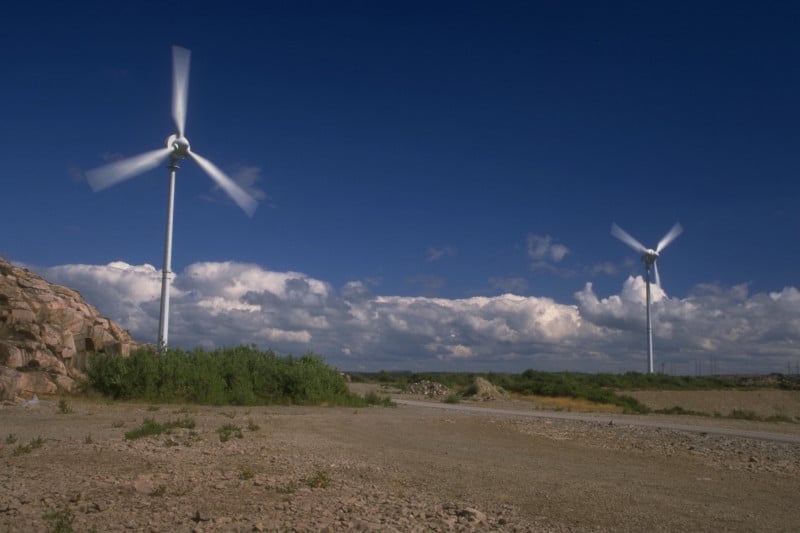
Wind power plant, Humlekärr. Year: 1997 | Place: Lysekil | Creator: Hans Blomberg | ID: VF000046
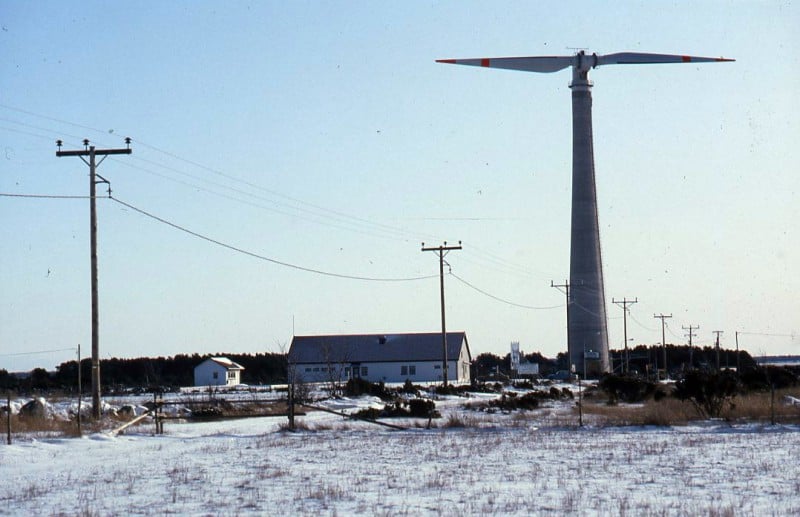
Näsudden wind power plant on Gotland. Year: - | Place: Näsudden | Creator: Vattenfall | ID: VF000045
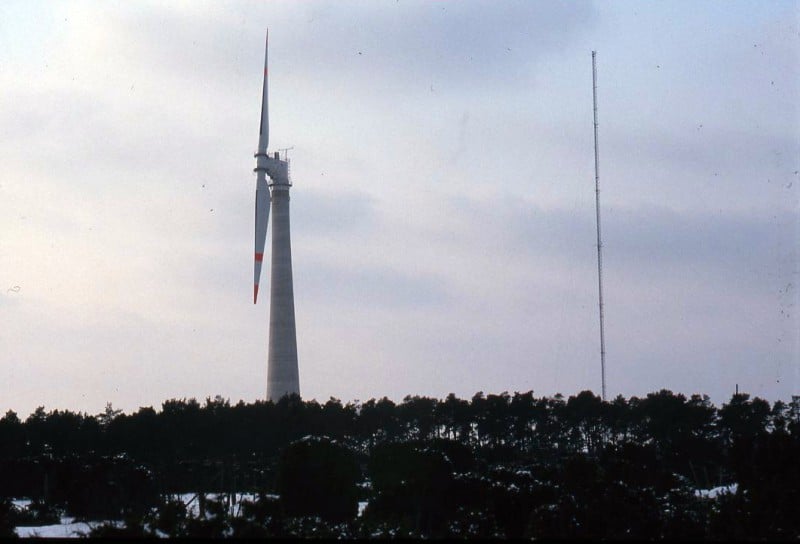
Näsudden wind power plant on Gotland. Year: - | Place: Näsudden | Creator: Vattenfall | ID: VF000044


